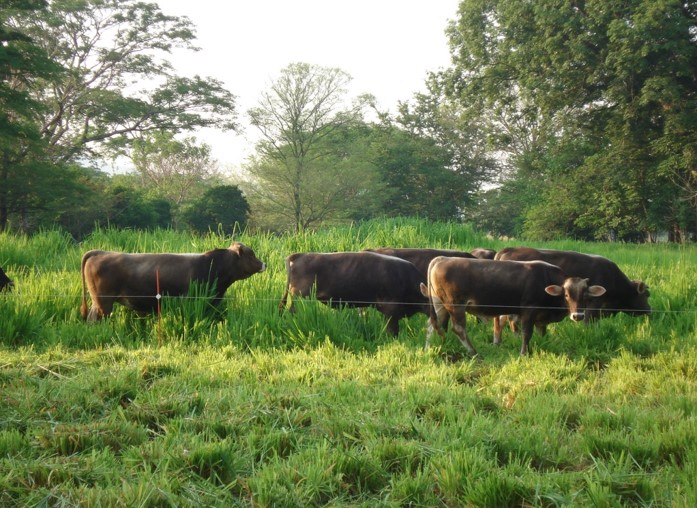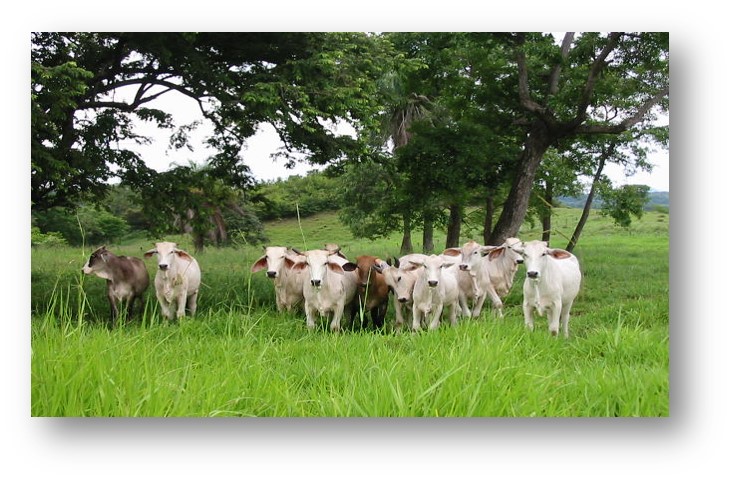Rational grazing according to Voisin
(Edited)
There are still a large number of cattle production units that, due to erroneous management, inappropriate techniques, lack of knowledge of the value of the natural resources that the property presents, among others; a favorable yield is not achieved through the application of a rational grazing system.

This rational system offers various offers, which the producer can see reflected in: cost reduction, increased profitability in production, better presentation in areas intended for livestock feeding in a production unit, animal control and management, among others. When the grazing system does not meet the required standards, resource constraints arise in the production; as an example: to reimplant areas to greater continuity of pastures, generating expenses, food deficit whose unfavorable consequences will be continuous if they do not get to know and put into practice the best recommendations, recognizing the importance of the use of the rational grazing system as a fundamental pillar in a good management for pasture-based bovine feeding. We can say then that for a good achievement in the economic exploitation in bovine production, greater importance should be given to the management of the areas dedicated to pastures; because its flora is very variable and responds to the agents to which they are subjected.
The rational grazing system consists of applying laws based on the function or relationship of the pastures and the needs or requirements of the animal; all this controlled by man. This controller must have awareness and maximum knowledge of the processes completed by the plant (pastures), their needs, responses to the environment, among others. There are four laws whose foundations are focused on achieving the best results in the production of pastures to feed cattle whose food base originates in the rational grazing system, promulgated by Dr. Andree Voisin.

Rational grazing consists of using advanced, efficient techniques taking into account the plant environment behavior of each species of pasture; taking care of soils and all this directed by man. The main objective is to improve soils, avoid erosion, fertilize soils, improve the supply of pasture production, have a healthy environment, quality in fodder, animal health, production performance, lower expenses, organic products.
The law of rest expresses that it is of vital importance the time required between cutting and cutting by the animal, so that the grass plant, manages to accumulate nutrients, helped by the process of photosynthesis, which will be manifested in its new shoots or foliage that produced daily is called as growth flare and that also depends on environmental factors, the biggest mistake in this period is the premature use of forage. The law of occupation is the period of consumption by the animal, this must be short otherwise the plant will not be able to form new nutrients at the root level or cells for its foliage, by alteration in the processes this is harmful both in direct consumption of the animal or mowed, it also affects a late harvest because an excess of fiber will be presented in the pastures.

In the law of maximum yield or categories it must be known which animals require higher nutritional requirements, providing greater quantity and better quality in the pastures they consume; also take into account that they have less grazing work. In the last law or regular yields it is expressed that an animal that is fed under a rational grazing system, should not stay for more than three days in an area intended for that purpose, this is reflected in the yield that it loses by consuming lower quality nutrients if said regulations are not complied with.
Dear readers, thanks to this knowledge it is concluded that the relationship between the growth of grass, the consumption of the animal directed by man, the training through correct knowledge and practice depends on the achievement of a good rational grazing system. Man must be responsible for correct learning, carry out healthy practices for the environment, conduct projects responsibly, value every resource that nature provides, every achievement in favor of species and be a good observer of the results achieved.
| Bibliographic references |
|---|
- Experimental station of pastures and forages Indio Hatuey (2011).Andre Voisin. Cuba.
Sources
- Photography and images: All photographs and images are the property of the author @amestyj
- Agrotecnia banner: made by the author @amestyj with own images
- Hive Banner: Designed by the author @amestyj with image owned by hive.



0
0
0.000
Thanks for your contribution to the STEMsocial community. Feel free to join us on discord to get to know the rest of us!
Please consider delegating to the @stemsocial account (85% of the curation rewards are returned).
You may also include @stemsocial as a beneficiary of the rewards of this post to get a stronger support.